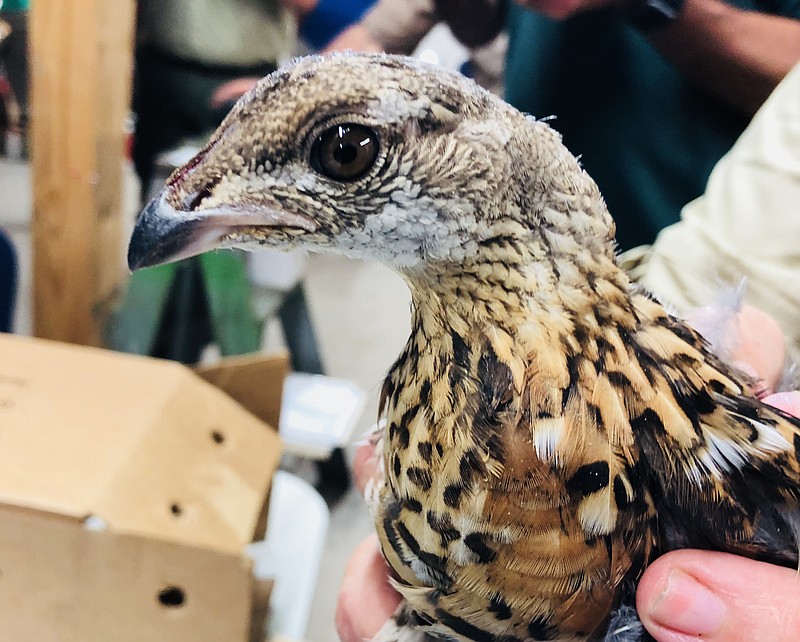The Missouri Department of Conservation and Wisconsin Department of Natural Resources are working together to help restore Missouri's ruffed grouse population, according to an MDC news release.
MDC plans to trap and relocate 300 grouse from northern Wisconsin to the River Hills region of east-central Missouri - over a three-year period (2018-20).
Ruffed grouse are a native species in Missouri, but numbers have declined over the last several decades as forests have aged, according to MDC's news release. Grouse require extensive areas of young forest habitat to survive.
"Grouse numbers have been declining for several decades in Missouri, and I believe a restoration effort like the one we are pursuing is necessary to sustain these birds in our state for the long term," MDC Resource Scientist Jason Isabelle said.
While Missouri has scattered small populations of ruffed grouse in the River Hills and Ozarks regions, the Conservation Department does not have a statewide population estimate, Isabelle said.
The goal of the restoration project is to trap and relocate 100 grouse a year to Missouri. MDC worked with Wisconsin DNR staff to conduct trapping efforts in Wisconsin from Aug. 15 through Sept. 15, with 100 grouse relocated to Missouri to complete this year's efforts.
"This year's grouse restoration effort went very well," Isabelle said in the news release. "Between constructing, setting and running traps, processing, transporting and releasing birds, managing habitat, and all the logistics involved with a project like this, it was truly a team effort that wouldn't have been possible without the support of many dedicated individuals."
Extensive habitat management has been conducted in Missouri's River Hills region to maximize success for grouse restoration, MDC reported. The region, which generally spans from Columbia to St. Louis between I-70 and the Missouri River, once was a stronghold for ruffed grouse.
"Our agency, along with private landowners and partners, has been creating grouse habitat at the release sites for more than a decade now," Isabelle said. " We believe we now have enough habitat to sustain a population, and that is why we decided to pursue the restoration effort at this time."
He noted the restoration effort is not targeting a specific population size.
"We will use drumming surveys during spring to monitor the status of the population in and around the release sites," Isabelle said.
Missouri eventually could consider establishing a hunting season for ruffed grouse, Isabelle said, but the focus now is reestablishing the native bird's population.
MDC will donate $200 per relocated grouse to Wisconsin DNR, which will be used to create habitat for grouse in the areas where trapping is taking place, he said.
"Strong partnerships are critical to keep conservation thriving and moving forward," MDC Director Sara Parker Pauley said in the news release. "We value this long-standing partnership with Wisconsin DNR and are grateful for their willingness to provide grouse for our ongoing restoration efforts here in Missouri."
MDC and Wisconsin DNR are continuing a partnership that dates back decades when MDC provided Wisconsin with turkeys to reestablish their now thriving population, according to the MDC news release.

